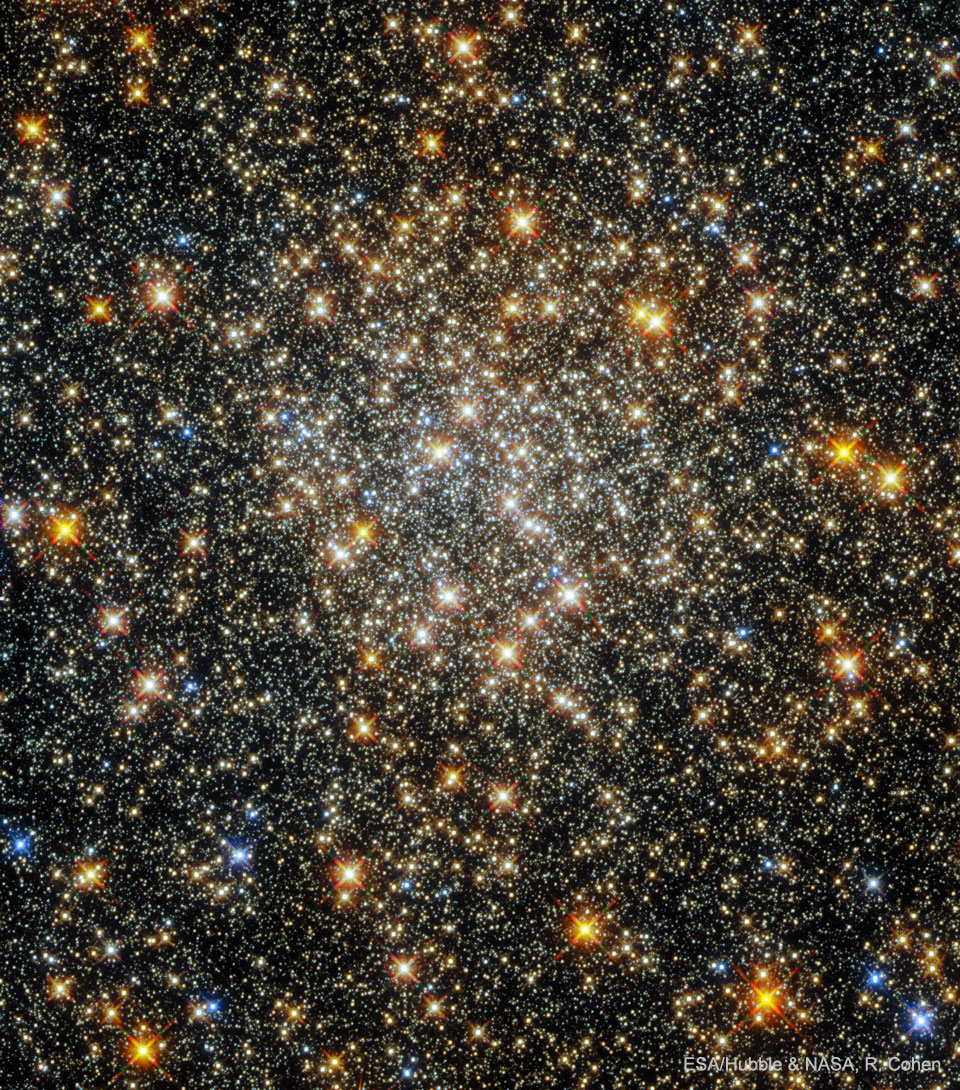2021年10月19日
Palomar 6: Globular Star Cluster
Image Credit: ESA/Hubble and NASA, R. Cohen
Explanation: Where did this big ball of stars come from? Palomar 6 is one of about 200 globular clusters of stars that survive in our Milky Way Galaxy. These spherical star-balls are older than our Sun as well as older than most stars that orbit in our galaxy’s disk. Palomar 6 itself is estimated to be about 12.5 billion years old, so old that it is close to — and so constrains — the age of the entire universe. Containing about 500,000 stars, Palomar 6 lies about 25,000 light years away, but not very far from our galaxy’s center. At that distance, this sharp image from the Hubble Space Telescope spans about 15 light-years. After much study including images from Hubble, a leading origin hypothesis is that Palomar 6 was created — and survives today — in the central bulge of stars that surround the Milky Way’s center, not in the distant galactic halo where most other globular clusters are now found.
Tomorrow’s picture: lucy in the sky
帕洛玛6:球状星团
影像提供: ESA/Hubble and NASA, R. Cohen
说明: 这大团恒星球从何而来?帕洛玛6是我们银河系大约200个孑遗的球状星团之一。这些球状星团比我们太阳年老,也比在银盘的大部分恒星要年老。帕洛玛6的年龄约为125亿年,与宇宙的年龄相近,约可视为整个宇宙年龄的上限值。约拥有500,000颗成员星、距离约25,000光年远的帕洛玛6,位在我们银河中心附近。以此距离来换算,这幅清晰的哈勃太空望远镜影像,约莫涵盖15光年的区域。在经过包括哈勃望远镜影像在内的诸多探索之后,一项可信的起源假设指出帕洛玛6是由银心周围鼓核内的恒星所聚成,如今亦运行于鼓核之内,与绝大多数现在漫游在遥远银晕里的球状星团大异其趣。
明日的图片: lucy in the sky







